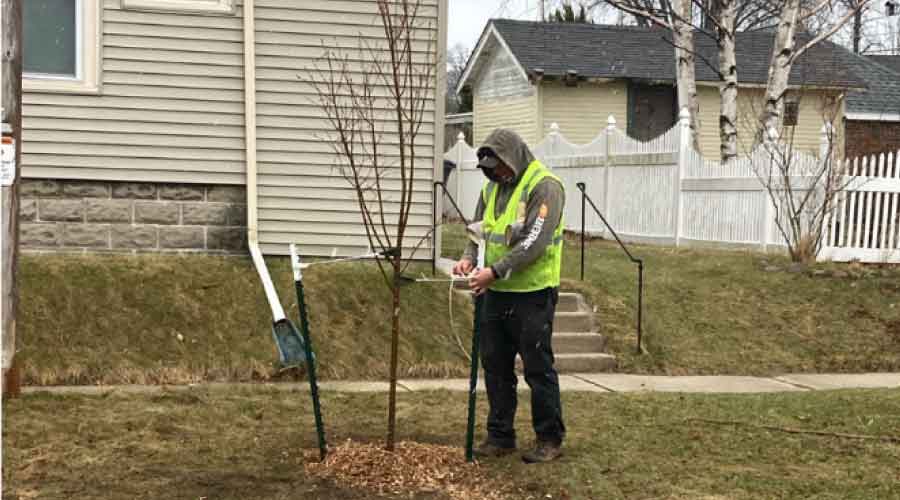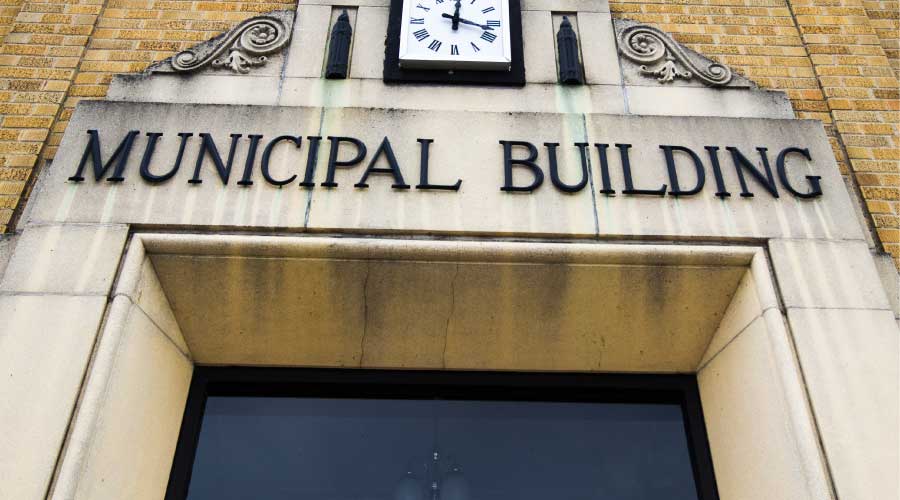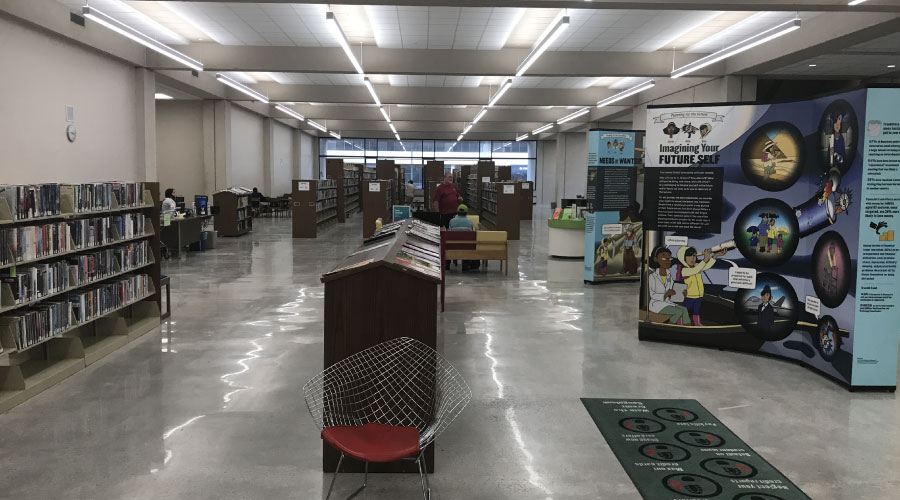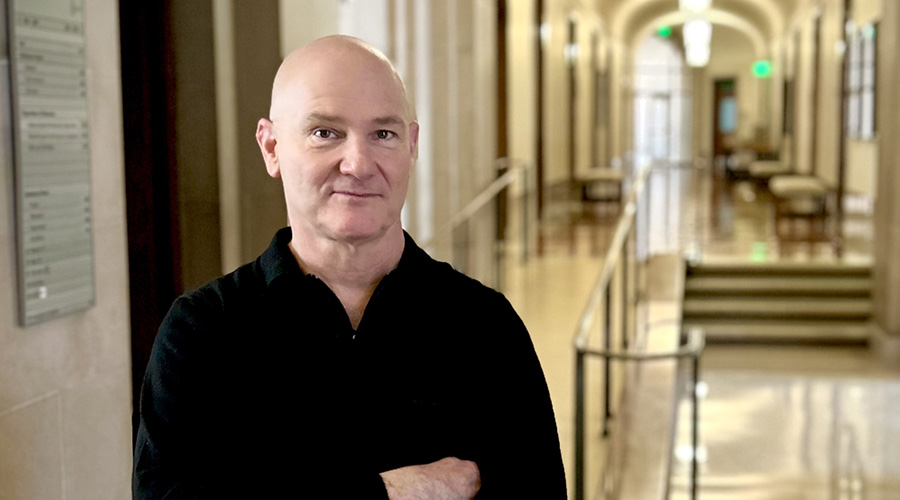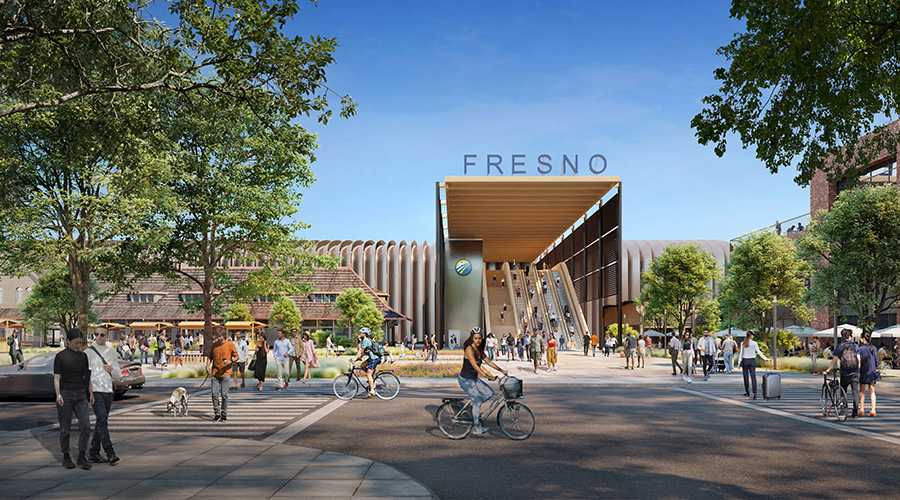Wisconsin City Overcoming Battle with Emerald Ash Borer
After five years of removing more trees than planting, Sheboygan reverses the trend in 2022.
By Dave Lubach, Managing Editor
As the first city in the state of Wisconsin to be designated as a “Tree City USA” during the 1970s, Sheboygan’s department of public works (DPW) takes great pride in its forestry program.
“I know there are residents that are really passionate about trees, and I feel like it shows to them that the city cares greatly as well,” says City Forester Tim Bull. “So, it’s a benefit to them.”
Sheboygan, a city of 50,000 located on the Lake Michigan shoreline about an hour’s drive north of Milwaukee, recently doubled down on Tree City honors with a new designation as a “Tree City of the World,” one of only 120 cities so honored.
Bull was hired as an arborist by the city in 2016 to help Sheboygan deal with the Emerald ash borer (EAB), an insect that feeds on ash trees and is responsible for the death of millions of trees in the United States.
Six years later, Sheboygan is still dealing with the effects of EAB, but thanks to the efforts of Bull and his staff, the battle is finally turning the corner.
“I’m guessing that the emerald ash borer insect population is either at its peak or just past the peak right now,” Bull says. “There’s been a lot of insects the last two years, and I’d be surprised to hear that there’s more this year because a lot of ash trees are dead or near dead at this point.”
Dealing with EAB
When Bull was hired, the city had about 5,000 ash trees to try and preserve from the invasive beetles. The plan then was to treat about half the trees and remove the rest. Treatment continues on those initial trees and up to 800 each year required removal, but after six years, the momentum is finally reversing.
“In 2022, we’re turning that around and we’re going to be planting more than we’re removing,” Bull says. “It’s largely because we’re not removing so many ash trees anymore.”
This year, the city is planting 650 new trees. Most of the trees are placed curbside between sidewalks and roads on city streets, with about 50 or so slated to be planted in the city’s parks. Forestry crews planted 300 trees this spring and plans an additional 350 trees in the fall, currently being stored in a gravel bed at the city’s department of public works building.
When trees are delivered, it is important that they are planted within weeks of delivery time. Since more than half the order is scheduled to be planted in the fall, the city faced a dilemma on how to best preserve the new trees until it was time for them to be planted.
“We’ve got to keep those roots damp, so we held (the spring planted trees) in wet mulch or something like that,” Bull says. “But by making that fall order, we were kind of limited on what species we could get based on nursery availability and we made it work.”
Sheboygan’s solution for the fall trees was to use gravel beds as a temporary home for the trees after visiting a nearby community seeking advice.
“We went down and looked at the city of Racine (in Wisconsin) gravel beds and watched them function and see how it works and the tree benefits based on them,” Bull says. “We decided to build beds and got some grant money to support that.”
Replacement system
EAB limited the city’s ability to rebuild its tree count. Bull says the city cut down 600-800 trees a year during the last five years. Finally, this year, the city finds itself in the good situation of planting more trees than crews are removing.
The city’s residents are taking an active role in this resurgence.
“We haven’t been able to replace one for one in the last five, six years,” Bull says. “I’ve been taking requests from people online, they can email and go to a website, or they can call and request a street tree. This year because we’re planting more trees, I had more trees available than requests.”
Forestry crews are filling requests on city streets where vacant areas now exist. EAB decimated some street tree counts, but those streets are now being filled again with young trees.
“It’s just more efficient to plant 10 trees on one street than it would be to plant one tree,” Bull says. “Our goal is to just keep filling vacancies and get back our tree population to where it should be.”
Maintenance work
Bull’s staff includes four year-round arborists and he receives additional help in the winter from other DPW staff and gets two seasonal employees during the summer. In addition to tree planting and removal, Sheboygan’s forestry teams are responsible for all tree-related things.
Among the other duties the staff is responsible for are stump grinding, pruning and trimming of trees near roads, sidewalks and streetlights. They also respond to calls from residents who report downed or dead trees.
During recent years the city has utilized tree inventory software that houses all of the city’s street and park trees in one database that can chart the trees’ histories, Bull says.
“I would say the inventory is probably the best tool I have,” he says. “When I first started in 2016, we had an old system and it was only computer-based. A lot of the work we did was on paper and we’d get a written address and nothing was organized by order.
“With this software you can view it on your phone, you can do it on an iPad, or a computer and it has just streamlined efficiency so much. If a city doesn’t have that they need to get better and improve what they have.”
Dave Lubach is the managing editor for the facilities market. He has seven years of experience covering facilities management and maintenance.
Related Topics:








